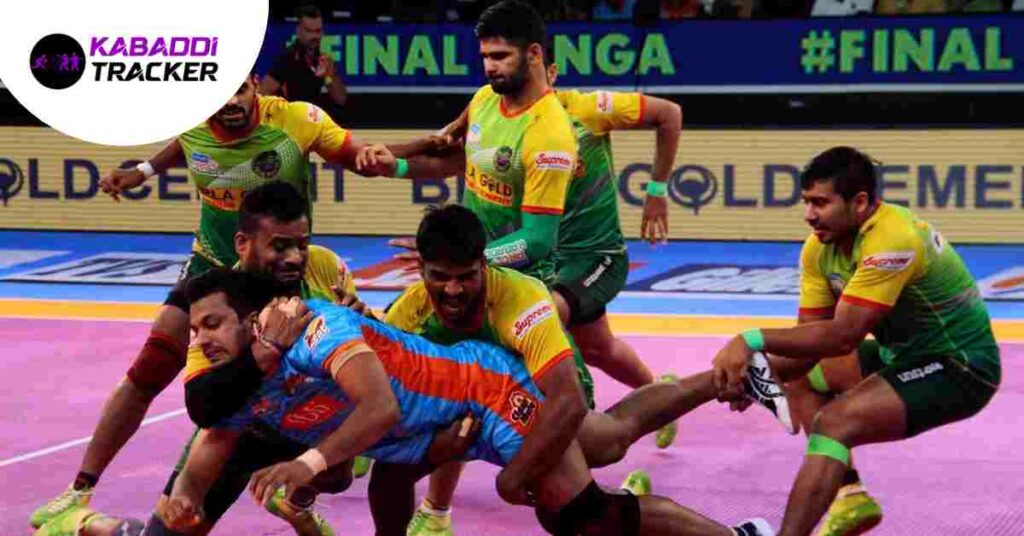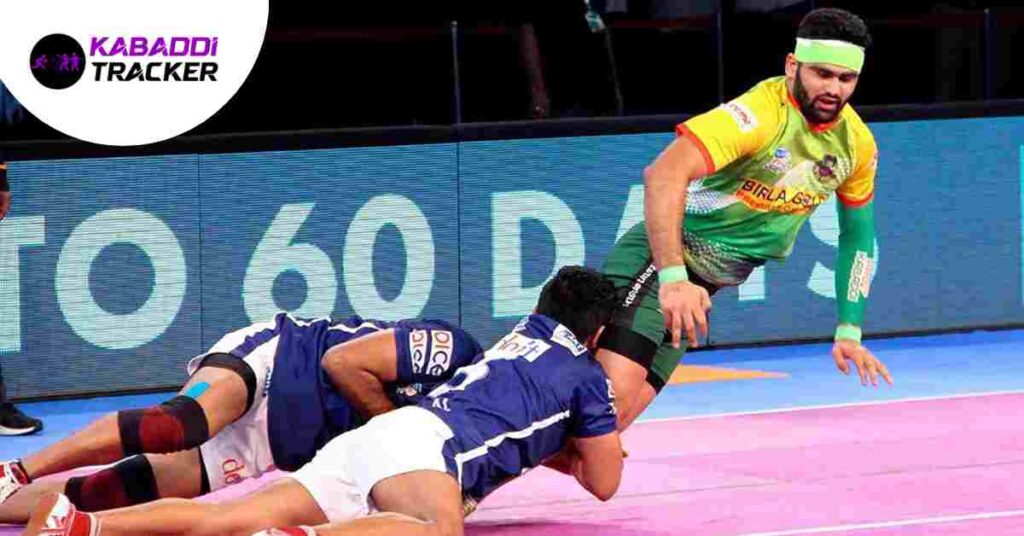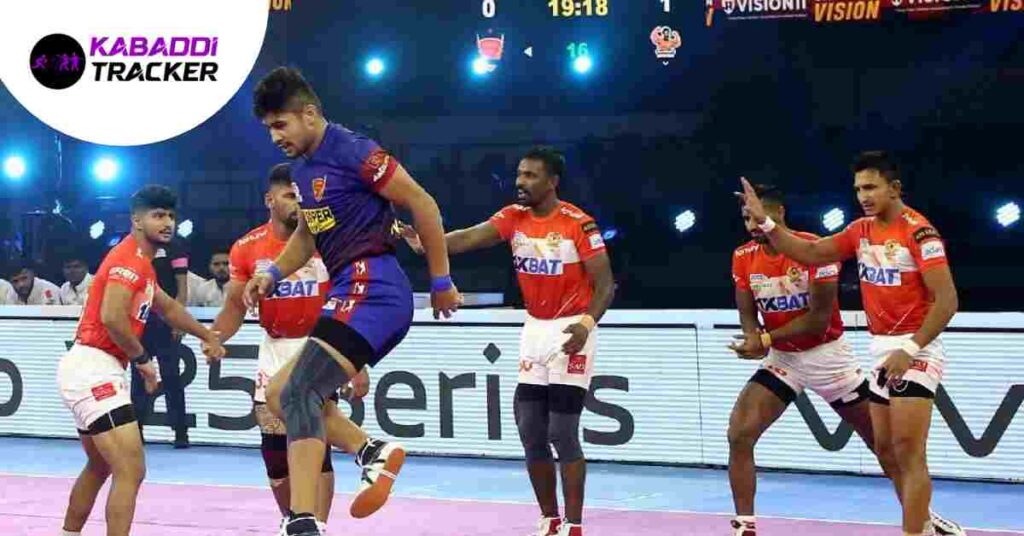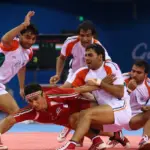Kabaddi, a sport well-established in ancient Indian culture, has developed into a globally perceived cutthroat game that showcases physical prowess as well as strategic brilliance. At the center of this captivating sport lie two pivotal roles – the Raider and the Catcher. These roles are the heartbeat of kabaddi, dictating the back-and-forth movement of the game, and showcasing the essence of teamwork, strategy, and individual skill. In this article, we dive into the universe of kabaddi, shedding light on the distinct responsibilities, challenges, and attributes that characterize the Raider and Catcher. From the adrenaline-initiating raids to the nail-gnawing tackles, the Raider and Catcher carry their novel Flavors to the game, making kabaddi a spectacle of strength, agility, and insight.
The Raider in Kabaddi :
This daring and high-stakes maneuver is executed inside a set time limit, testing the Raider’s agility, speed, and tricky. The Raider’s primary goal is to tag defenders and return to their side of the court, earning valuable points for each successful tag.
To succeed as a Raider, a player must possess an extraordinary mix of physical prowess and strategic acumen. Speed and agility are crucial for evading defenders’ grips, while fast decision-making ensures a successful retreat to safety. Raiders also need to understand the defensive patterns of their opponents, recognizing weaknesses and taking advantage of them with calculated moves.
Furthermore, mental fortitude plays a pivotal job in a Raider’s success. The pressure to execute successful raids consistently while under the constant threat of tackles requires nerves of steel. Speedy reasoning, improvisation, and the ability to assess risks on the fly are skills that set apart the great Raiders from the rest.
Also Read – How many players are there in a Kabaddi Team?
The Catcher in Kabaddi :

On the opposing finish of the spectrum, we have the Catcher, whose primary task is to apprehend the Raider and forestall their re-visitation of their half of the court. Successful catch results in the Raider being declared “out” and the defending team earning points. The Catcher’s job demands a combination of strength, anticipation, timing, and procedure.
The Catcher’s second arrives when the Raider steps onto their region. As the Raider makes a dash for safety, the Catcher must swiftly and decisively execute a tackle, seizing the Raider’s limbs and immobilizing them. This requires exceptional timing and coordination, often resembling a synchronized dance of strength and strategy. Catchers must read the Raider’s intentions, foresee their movements, and strike with precision, all inside the span of a couple of heartbeats.
A Catcher’s physical prowess cannot be underestimated. Their ability to cut down even the swiftest and most elusive Raiders is a testament to their strength and skill. Nonetheless, not just savage force defines a Catcher. A profound understanding of body mechanics, angles, and leverage comes into play, making each tackle a very calculated endeavor.
Symbiotic Relationship in Kabaddi :
The Raider and Catcher, however seemingly on opposite ends of the spectrum, share an intricate symbiotic relationship that embodies the spirit of kabaddi. The Raider’s success relies on the Catcher’s failure to apprehend them, and the Catcher’s success hinges on their ability to anticipate and neutralize the Raider’s advances. This association underscores the importance of teamwork as well as highlights the dynamic nature of the sport.
The ease of these roles is a spectacle to observe. In a single game, a Raider can transform into a Catcher as well as the other way around, adapting to the developing dynamics of the match. This versatility showcases the profundity of skill possessed by kabaddi players and underscores their ability to seamlessly transition between roles.
Evolution of Kabaddi and the Raider-Catcher Dynamics in Kabaddi :
Kabaddi’s history can be traced back to ancient India, where it was played as a form of physical exercise, entertainment, and a test of one’s strength and skill. Over the long run, the game has developed into a serious sport with various formats, rules, and international recognition. Central to this evolution are the roles of the Raider and Catcher, whose interactions embody the spirit of kabaddi.
The Raider’s job, in particular, has witnessed significant transformation. In its traditional form, kabaddi involved a Raider attempting to tag as many defenders as possible before making a hasty retreat. With the advent of professional leagues and international competitions, Raiders have become more strategic and agile, depending on feints, speedy movements, and tricky tactics to outwit defenders. The advanced Raider embodies the ideal mix of traditional techniques and contemporary athleticism.
Attributes of a Successful Raider in Kabaddi :
Agility and Speed: A Raider’s ability to swiftly navigate the opponent’s region and avoid being caught is paramount. Their agility and speed are vital for escaping tackles and earning valuable points.
Decision-making: Raiders must think and react quickly, assess situations rapidly, and adapt their strategies accordingly. Split-second decisions often decide the success of a raid.
Deception: The art of deception is crucial for Raiders. They often utilize feints, sudden changes in direction, and unpredictable movements to keep defenders off balance.
Game Insight: Raiders must understand the defensive patterns of their opponents, recognizing weak links that can be taken advantage of. This requires astute game knowledge.
Physical Endurance: Successful Raiders need to execute different raids in a single match. Physical endurance ensures they maintain their effectiveness throughout the game.
Skills and Qualities of a Powerful Catcher in Kabaddi :

Timing and Anticipation: Catchers must anticipate the Raider’s movements, foreseeing their actions to execute a successful tackle. Timing is everything in these lightning-fast encounters.
Strength and Procedure: Catchers need substantial physical strength to immobilize a Raider. In any case, procedure and understanding of body mechanics play a vital job in conquering even the most remarkable Raider.
Calm Under Tension: Just as Raiders need mental fortitude, Catchers must remain composed in high-pressure situations. The ability to execute tackles accurately amid the chaos of a raid is essential.
Teamwork: Catchers work in tandem with their kindred defenders. Communication and coordination are crucial to ensure they cover all angles and limit the Raider’s escape routes.
Adaptability: Catchers often face Raiders with diverse styles and techniques. The ability to adapt rapidly to the Raider’s strategy is essential for consistent success.
Strategies and Tactics in Kabaddi :

Kabaddi is a game of strategy as much as it is about physical prowess. Teams utilize various tactics to maximize their chances of success.
Also Read – List Of Kabaddi Academy in India
Raider Strategies: Raiders often use diversionary tactics to split the defense, creating openings for successful tags. They may target weaker defenders or take advantage of gaps in the defensive formation.
Catcher Tactics: Catchers study the Raider’s tendencies and non-verbal communication to foresee their moves. They may work in pairs to corner the Raider or utilize a “chain” strategy, where a gathering of Catchers attempts to cut down the Raider in unison.
Team Coordination: The two Raiders and Catchers benefit from strong team coordination. Defenders must anticipate the Raider’s actions, while Raiders depend on their teammates to create distractions and open pathways.
Kabaddi’s essence lies in the intricate dance among Raiders and Catchers, a symphony of development, strategy, and skill that captivates audiences around the world. As this ancient sport evolves to embrace current athleticism and innovation, the Raider and Catcher remain its beating heart. From the dusty courts of rural India to the grand stadiums of global competitions, kabaddi’s Raider-Catcher dynamics continue to inspire, entertain, and celebrate the essence of human competition. As fans chant “kabaddi, kabaddi” in unison, they pay homage to the persevering spirit of a game where Raiders raid for magnificence, and Catchers stand tall as guardians of their turf.





